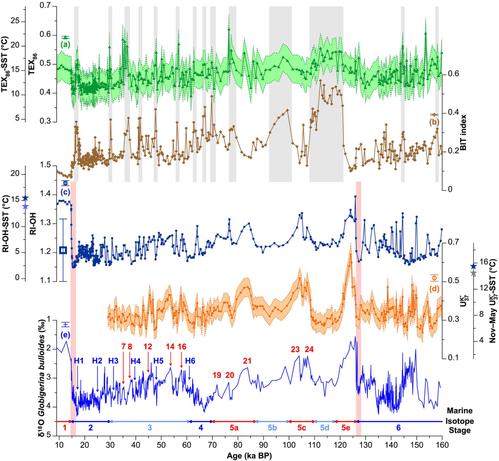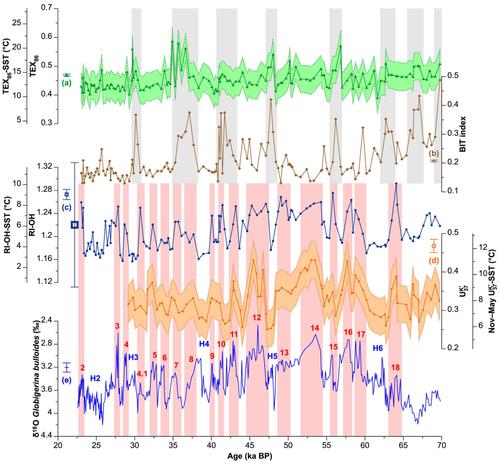Unlike #TEX86, another #GDGT-based #paleotemperature #ClimateProxy named the #Ring #Index of hydroxylated tetraethers (RI-OH) behaves as an #SST proxy despite the terrigenous #inputs.
This #place too deserves a #thread about my related #PhD #research #publication in #Paleoceanography and #Paleoclimatology:
https://doi.org/10.1029/2018PA003452 (1/5)
#Science #ScienceMastodon #Paper
#PaleoClimate #PaleoClimates
#ClimateChange #ClimateChanges #AbruptClimateChange
#SeaSurfaceTemperature
#MediterraneanSea

